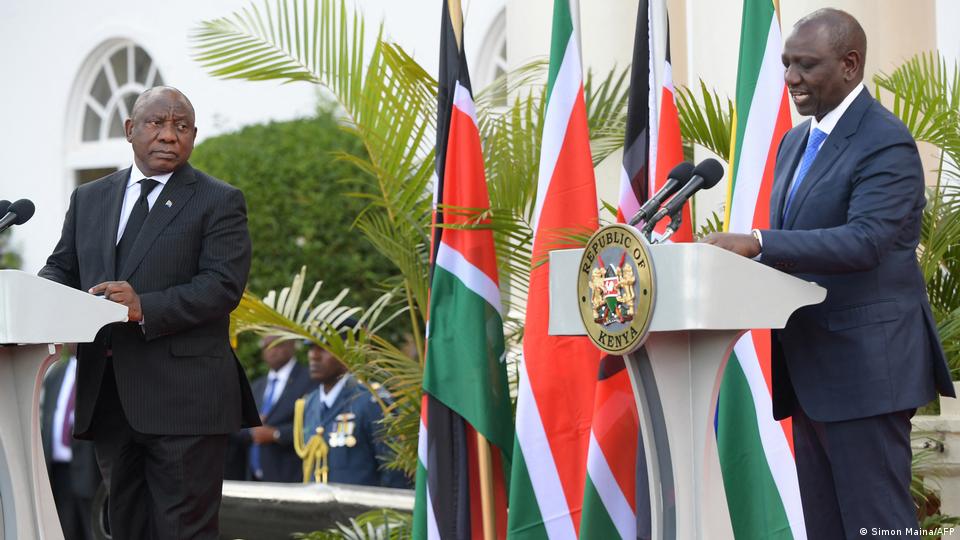With up to 60% of tourism arrivals in Uganda originating in Kenya, the country’s Consulate General in Mombasa has called for new synergies to reap even more for the sector.
Uganda’s Consul General to Mombasa Amb. Paul Mukumbya revealed Thursday at the Uganda – Kenya Coast Tourism Conference and Exhibition held at Pride Inn Paradise Resort that between January and March 2022 alone, close to 95,000 Kenyans visited Uganda. He said they travelled to attend golf and rugby tournaments, and also for festivals and music concerts.
Mukumbya said that if the tourism stakeholders and officials of Uganda and Kenya worked closer together, tourist numbers could double in the next one year.
“It is my sincere hope that by the end of the conference and the fam trip, a strong foundation for cooperation will have been built between key tourism players in Uganda and the Kenya Coast,” he said.
Tourism arrivals in Uganda, as of 2021; stood at 512,945. Out of these, 326,387 were from Kenya, which translates to 63.63% of all arrivals in Uganda.
Tourism stakeholders drawn from Uganda and Kenya are meeting in the Kenyan port city of Mombasa at an event dubbed ‘Uganda-Kenya Coast Tourism Conference and Exhibition’. The theme is “Strengthening Networks, Synergies, and Diversity to maximize the tourism potential between Uganda and the Kenya Coastal Region”
The Chairman of Kenya Coast Tourism Association (KCTA) Victor. M. Shitakha described the conference as historic because it is the first-ever regional tourism conference and business to business engagement to be held at the Kenya Coast. He added that this conference offers an opportunity for a structured discourse towards developing Kenya Coast tourism and Uganda circuit where foreign tourists to the region can visit both the two nations under one circuit while also accelerating cross border tourism.
“As Kenya Coast, Uganda is one of our major Africa trading partners and tourism source market. Both the two nations enjoy mutual and peaceful coexistence that supports growth of the regional economy,” he said.
“It is also important to note that both Kenya Coast and Uganda offer unique memorable and complimenting experiences, I therefore call upon the regional tourism stakeholders to seize the opportunity and work together in enhancing the regional tourism trade and investment,” Shitakha explained.
This conference has been organized by the Consulate General of the Republic of Uganda in Mombasa, in partnership with key tourism players in Uganda and the Kenya Coast: the Uganda Tourism Association, the Private Sector Foundation Uganda, the Uganda Tourism Board, Uganda Airlines, the Kenya Coast Tourist Association, the Counties of Mombasa, Kilifi and Kwale.
At the same event John Mulimba the Minister of State for Regional Cooperation Foreign Affairs noted that, “the importance of tourism in our economies cannot be underestimated. It is insurmountable.”
According to analysts, these numbers can even go higher once the tourism players in the two countries join hands.
Promotion and popularization of the Entebbe-Mombasa route plied by Uganda Airlines is also on the agenda.
It is worth noting that Kenya’s coastal region is home to various attractions that include Fort Jesus that was built between 1593 and 1596 on the orders of Portugal’s King Felipe II unique safaris, beaches and historical heritage making the two nations ideal for travel.
Other facilities within the coastal belt, Kwale County to be particular; include Baobab Beach Resort, The Residence at Leopard, Diani Reef Beach Resort and Spa, Kinondo Kwetu which scooped various awards at the 2022 World Travel Awards which were held in Nairobi.
As if that is not enough, Kwale Governor Fatuma Mohamed Achani says efforts are underway to develop other attraction sites; Majimoto, Wasini Boardwalk, Shimoni and Fikirini caves and First World War Memorial graves at Mkongani among others.
Source: Independent (Kampala)










